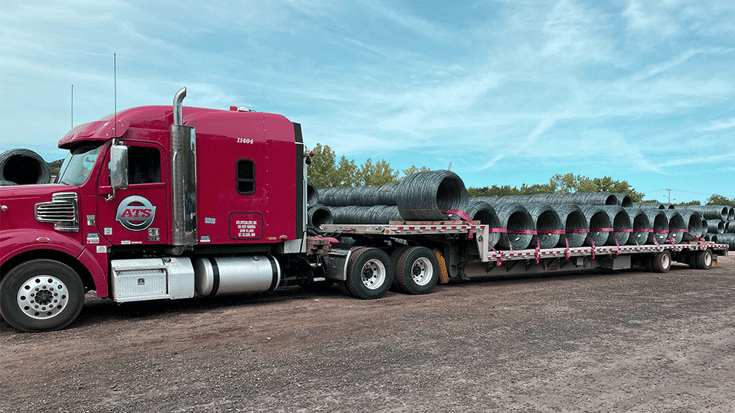
Protecting cargo is top of mind for many companies. That said, ensuring freight arrives at its destination in good condition can sometimes be challenging for open-deck shipments which have external elements, like the weather, to contend with.
It’s not like you can avoid shipping these cargoes. So, what can you do to ensure your load is delivered damage-free? You’ve never been one to shrink from a challenge and even though your open-deck shipments can get a bit complex, this doesn’t mean the quality of your products should suffer.
But what can you do?
Here at Anderson Trucking Service (ATS), our specialized division moves thousands of open-deck loads a year. In doing so, we’ve gotten intimately familiar with the intricacies that accompany these moves and what it takes to transport freight safely and securely without damaging it.
You deserve to see your freight arrive in the condition it left in and your transportation provider should only help you do so. In this article, we’ve outlined seven ways to protect open-deck cargo during transit so that, when it’s time for the rubber to meet the road, your shipment is in the best position possible for successful delivery.
The seven most common ways shippers keep their open-deck freight safe during transport are:
- Using standard tarping methods
- Gift wrap tarping freight
- Using shrinkwrap
- Using crates
- Using v-boards
- Using beveled dunnage
- Using Conestoga trailers
Although the tactic(s) you use will vary based on the unique needs of your cargo, understanding each of your options is crucial to making these decisions. Here they are. . .
⏬ Listen to the Podcast on This Topic ⏬
Discover more ways to listen >
Protect Open-Deck Freight With Standard Tarping
Of all the methods on this list, tarping is by far the most commonly utilized. The vast majority of open-deck cargo requiring in-transit protection from the elements can be tarped. For this reason, tarping is a standardized offering in the transportation world; drivers are trained to do it correctly and own a standard set of tarps to utilize.
While tarping your freight will come at an additional charge (usually between $100 and $150 for legal-sized cargo), it won’t be difficult to secure this solution when requested.
When properly situated and secured, tarping a shipment from the sides and above keeps it safe from the impact of harsh weather and any incidental damage that may occur from dust, dirt and debris during transport.
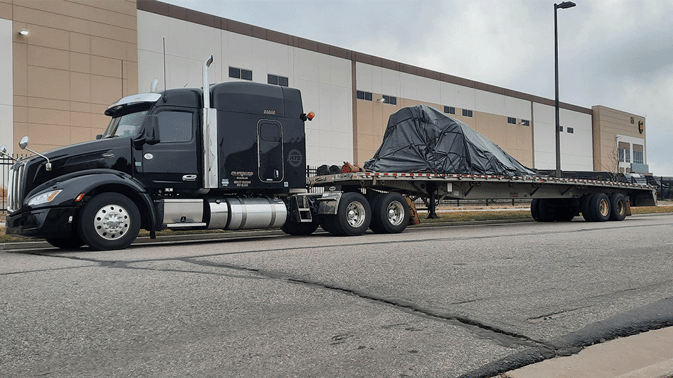
To perform standard tarp service, truck drivers throw tarps over the freight at its origin, ensuring that nothing raw is exposed. It’s important to note that tarping is often a labor-intensive process — particularly in the cold of winter or summer heat.
As such, the more you can do to help drivers throw their tarps, and/or avoid exposure to the elements while they do, the faster this process will be.
Protect Open-Deck Freight By Gift Wrap Tarping It
Beyond simply protecting cargo by draping tarps over it, sometimes open-deck shippers take this a step further. “Gift wrapping” cargo is the method where freight is wrapped in protective tarps on all sides, thereby keeping it from any kind of exposure during transport.
Where shippers that opt for standard tarp treatments receive a grouping of tarps draped over and around their load, gift-wrapped service tarps freight from below as well — requiring each load to be hoisted from above and placed onto tarps.
This highly-specialized, time-consuming and labor-intensive service is best used for only the most sensitive open-deck freight and isn’t offered by all carriers.
Though the price of “gift wrapping” a shipment varies based on its size, the number of tarps needed and the time “gift wrapping” takes to complete, expect to pay no less than $500 to have your legal shipment fully wrapped in tarps.
Protect Open-Deck Freight Using Shrink Wrap
Shrink wrapping is another common tactic used to keep open-deck cargo safe during transport. By shrink wrapping their goods — like their palletized freight, for example — companies are able to keep them protected from the moisture and debris that, left unchecked, can cause cosmetic damage during transport.
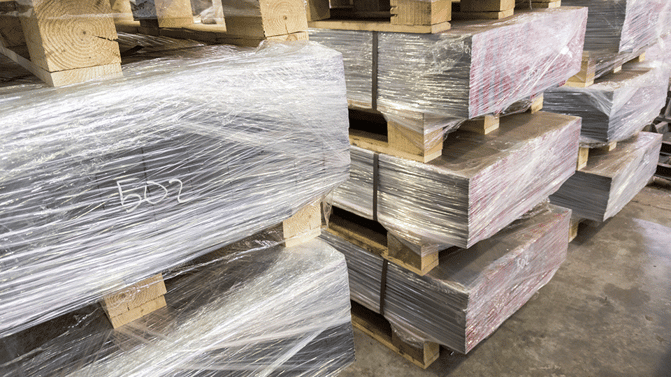
Shrink wrapping cargo is also a great way for shippers with less sensitive freight to save money on their rates by avoiding tarp charges. And, though the efficacy of shrink wrap decreases as the miles wear on, for shipments of 300-miles or less shrink wrap provides more than adequate protection.
Beyond this, some companies use shrink wrap as an additional layer of insulation and protection while also using tarps.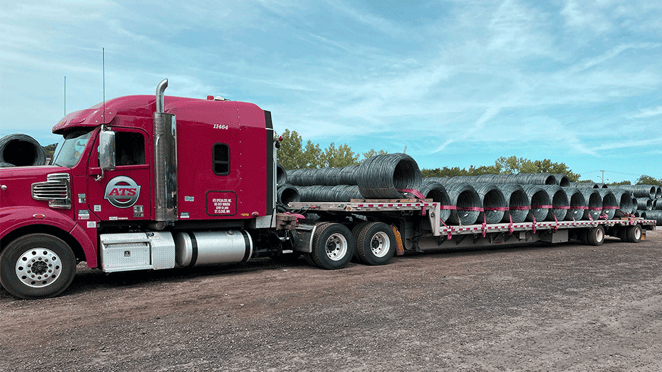
In these instances, freight is first shrink wrapped by a company’s shipping crew and then tarped by the driver before transport. In doing so, shippers can ensure that their freight isn’t inadvertently damaged by the frequent rubbing of tarps on sensitive areas.
Protect Open-Deck Freight By Crating It
Another option some shippers use to protect their open-deck cargo is to contain it within wooden crates. By doing so, companies can guarantee the in-transit protection of even the most sensitive freight.
Most commonly, crating is used to protect products that, if exposed to wind, rain, snow, hail or sleet, would be significantly damaged and/or unable to function as intended. Additionally, crates can be padded internally to prevent cargo damage due to bumps and jostling.
For the most part, the companies that crate their products do so either using crates sourced from external vendors or assembled in-house.
Many transportation companies don’t offer crating services. That said, if your freight is frequently damaged in transit due to its delicate nature, investing in crating infrastructure or finding providers that do offer this service may be worth your time and money.
Protect Open-Deck Freight Using V-Boards
Cargo damage caused as a byproduct of securement is all too common when moving open-deck freight. Whether it’s because of prolonged compression, repeat rubbing, or something else, it’s not unheard of for straps and chains to damage freight.
To avoid these problems, many shippers ask their transportation provider for extra protection on the corners and flat surfaces of their cargo. Recently, V- Boards (v-shaped corner protectors) have become a mainstay across many supply chains.
Utilizing these protectors — which are typically plastic — is beneficial for both trucking companies (helping them protect their straps) and shippers with freight to move.
For this reason, don’t expect your price to increase should v-boards/corner protectors be requested. The vast majority of truckers have these tools at their disposal and, in many cases, prefer to use them.
However, if your freight requires corner protectors, V-boards and/or extra protection, it’s crucial that you communicate this need to your transportation provider. Without this knowledge, you may be sent an ill-equipped truck and face delays as a result.
Protect Open-Deck Freight Using Beveled Dunnage
For non-palletized open-deck freight that is loaded via forklift or crane — such as rebar or I-beams — dunnage is used to protect the trailer’s deck, to make it easier to load/offload goods and prevent shifting during transit.
Typically, dunnage has four square edges and can either be treated or scrap wood.
That said, when moving circular coils (particularly those of steel), beveled dunnage — which has one sloping, non-squared edge — can make things far more secure and prevent harmful sliding/shifting throughout transportation.
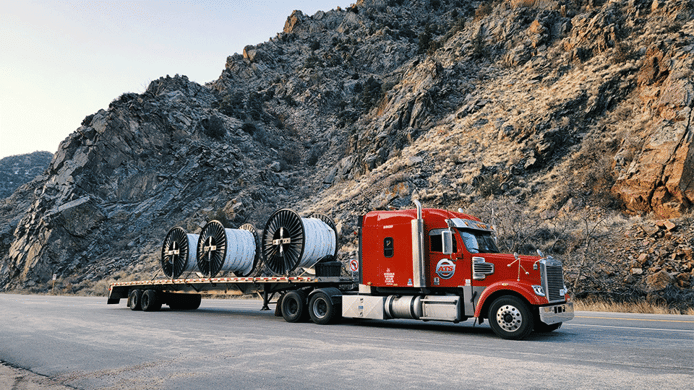
For carriers, owning beveled dunnage is more expensive than the alternative. As such, don’t expect every truck to be equipped with beveled dunnage. And, if you would like to use it on your next load it’s important that you specify as much to your transportation carrier.
While requesting beveled dunnage won’t necessarily impact the rates you receive, it’s crucial that your provider understands your needs so that they can put all of the necessary pieces in place to meet them.
Protect Open-Deck Freight Using a Conestoga Trailer
When it comes to moving open-deck freight from A to B, there are a ton of options for doing so. For in-transit protection, however, you’d be hardpressed to find a better solution than the Conestoga trailer.
Conestogas, which feature a sliding tarp system, give shippers the same side and top-loading capabilities boasted by other open-deck trailers, coupled with the security of 360-degree protection.
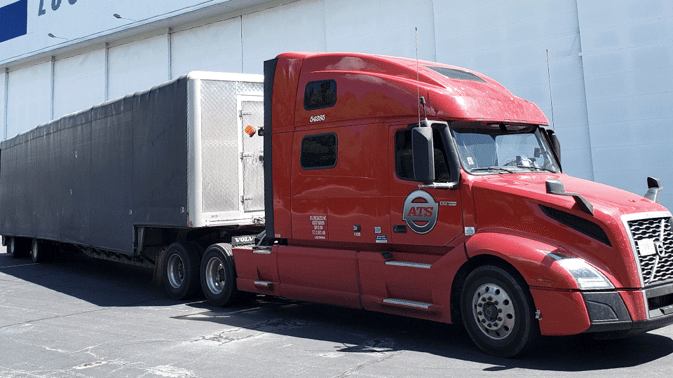
Beyond simply the retractable tarps, which are designed to keep the elements out and freight protected touch-free, Conestogas come in a variety of types including, step-deck, flatbed and double drop.
Because of their versatility and the ease of use they allow for drivers and shippers alike, Conestoga trailers are becoming increasingly common in today’s transportation world.
As such, if you’re looking for an alternative to tarping reach out to your trusted transportation provider for some more information on how using a Conestoga can keep your goods safe and secure from A to B.
Related: Should I Use a Conestoga or Tarp My Freight? (An Honest Comparison)
Keep Your Freight Safe With A Great Network of Carriers
Moving open-deck freight can be incredibly challenging — especially without the right network of companies in your corner. With rules and regulations that change by location and accessorials galore, it’s important that the carriers you use have the wherewithal, ability and expertise to manage your needs.
In the transportation world — a world brimming with providers to select from — this is usually easier said than done.
What are the markings of a truly great carrier? What kinds of questions should you ask to ensure each company has the capabilities you need?
You’re not alone in having these questions and concerns.
Here at ATS, our 67 years in this industry have taught us the markings of great open-deck providers, including what shippers (like you) should look for when selecting.
To help you make these discernments, download this free Flatbed Carrier Selection Checklist today. This 36-question checklist outlines everything you’ll want to know about a carrier before you ever tender them a load.
Finally, should you have any questions about the steps ATS will take to ensure your load delivers on time and in good condition, contact us today. We’re more than happy to help you in any way you need.





